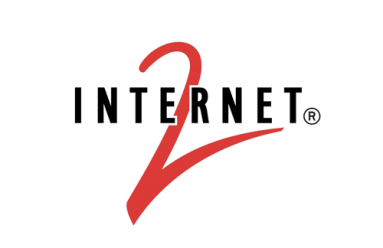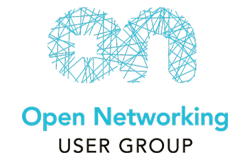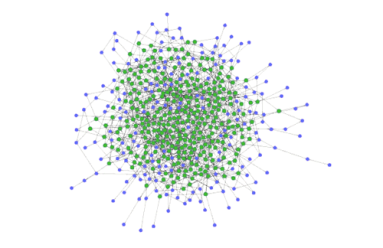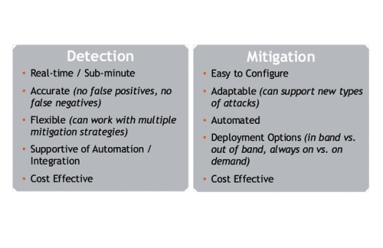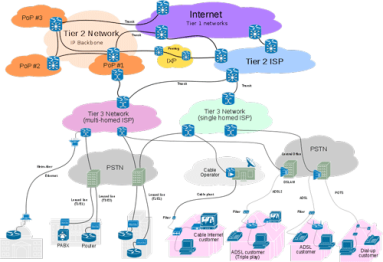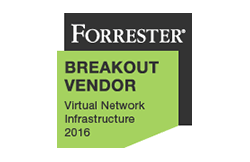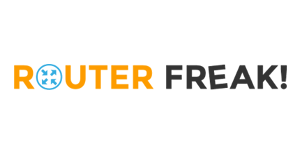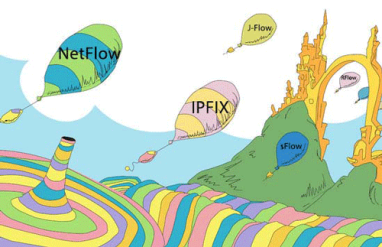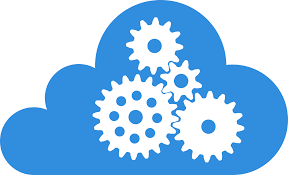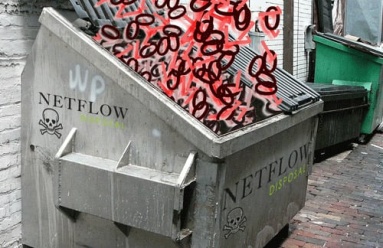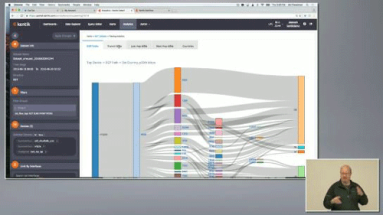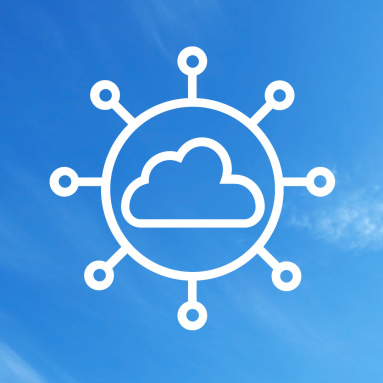Posts by Alex Henthorn-Iwane
























Among Kentik Detect’s unique features is the fact that it’s a high-performance network visibility solution that’s available as a SaaS. Naturally, data security in the cloud can be an initial concern for many customers, but most end up opting for SaaS deployment. In this post we look at some of the top factors to consider in making that decision, and why most customers conclude that there’s no risk to taking advantage of Kentik Detect as a SaaS.
What do summer blockbusters have to do with network operations? As utilization explodes and legacy tools stagnate, keeping a network secure and performant can feel like a struggle against evil forces. In this post we look at network operations as a hero’s journey, complete with the traditional three acts that shape most gripping tales. Can networks be rescued from the dangers and drudgery of archaic tools? Bring popcorn…
Obsolete architectures for NetFlow analytics may seem merely quaint and old-fashioned, but the harm they can do to your network is no fairy tale. Without real-time, at-scale access to unsummarized traffic data, you can’t fully protect your network from hazards like attacks, performance issues, and excess transit costs. In this post we compare three database approaches to assess the impact of system architecture on network visibility.
Telecom and mobile operators are clear on both the need and the opportunity to apply big data for advanced operational analytics. But when it comes to being data driven, many telecoms are still a work in progress. In this post we look at the state of this transformation, and how cloud-aware big data solutions enable telecoms to escape the constraints of legacy appliance-based network analytics.
In higher education, embracing the cloud enhances your ability to achieve successful outcomes for students, researchers, and the organization as a whole. But just as in business, this digital transformation can succeed only if it’s anchored by modern network visibility. In this post we look at the network as more than mere plumbing, identifying how big data network intelligence helps realize high-priority educational goals.
Stuck with piles of siloed tools, today’s network teams struggle to piece together both the big picture and the actionable insights buried in inconsistent UIs and fragmented datasets. The result is subpar performance for both networks and network teams. In this post we look at the true cost of legacy tools, and how Kentik Detect frees you from this obsolete paradigm with a unified, scalable, real-time solution built on the power of big data.
Large or small, all ISPs share the imperative to stay competitive and profitable. To do that in today’s environment, they need traffic visibility they can’t get from legacy network tools. Taking their lead from the world’s most-successful web-scale enterprises, ISPs have much to gain from big data network and business intelligence, so in this post we look at ISP use cases and how Kentik Detect’s SaaS model puts key capabilities within easy reach.
NPM appliances and difficult-to-scale enterprise software deployments were appropriate technology for their day. But 15 years later, we’re well into the era of the cloud, and legacy NPM approaches are far from the best available option. In this post we look at why it’s high time to sunset the horse-and-buggy NPM systems of yesteryear and instead take advantage of SaaS network traffic intelligence powered by big data.
Most of the testing and discussion of flow protocols over the years has been based on enterprise use cases and fairly low-bandwidth assumptions. In this post we take a fresh look, focusing instead on the real-world traffic volumes handled by operators of large-scale networks. How do NetFlow and other variants of stateful flow tracking compare with packet sampling approaches like sFlow? Read on…
It’s very costly to operate a large-scale Internet edge, making lower-end edge routers a subject of keen interest for service providers and Web enterprises alike. Such routers are comparatively short on FIB capacity, but depending on the routes needed to serve your customers that might not be an issue. How can you find out for sure? In this post, Alex Henthorn-Iwane, VP Product Marketing, explains how a new feature in Kentik Detect can show you the answer.
Today’s increased reliance on cloud and distributed application architectures means that denial of just a single critical dependency can shut down Web availability and revenue. In this post we look at what that means for large, complex enterprises. Do legacy tools protect sufficiently against new and different vulnerabilities? If not, what constitutes a modern approach to DDoS protection, and why is it so crucial to business resilience?
Kentik is pleased to announce our membership in the Internet2® consortium, which operates a nationwide research and education (R&E) network and establishes best practices for R&E networking. Because Internet2 is a major source of innovation, our participation will enable us to grow our connection to the higher education networking community, to learn from member perspectives, and to support the advancement of applications and services for R&E networks.
DDoS attacks constitute a very significant and growing portion of the overall cybersecurity threat. In this post we recap highlights of a recent Webinar jointly presented by Kentik’s VP of Product Marketing, Alex Henthorn-Iwane, and Forrester Senior Analyst Joseph Blankenship. The Webinar focused on three areas: attack trends, the state of defense techniques, and key recommendations that organizations can implement to improve their protective posture.
The range, creativity, and skills of the Kentik engineering team were on full display at our recent on-site for local and remote engineers. Gathering to confer on coming product enhancements, the team also enjoyed San Francisco dining and tried recreational welding and blacksmithing. But the highlight was our first-ever hackathon, which yielded an array of smart ideas for extending the capabilities of the Kentik platform.
With end-of-life coming this summer for Peakflow 7.5, many Arbor Networks customers face another round of costly upgrades to older, soon-to-be-unsupported appliance hardware. In this post we look at how Arbor users pay coming and going to continue with appliance-based DDoS detection, and we consider whether that makes sense given the availability of a big data SaaS like Kentik Detect.
Unless you’re a Tier 1 provider, IP transit is a significant cost of providing Internet service or operating a digital business. To minimize the pain, your network monitoring tools would ideally show you historical route utilization and notify you before the traffic volume on any path triggers added fees. In this post we look at how Kentik Detect is able to do just that, and we show how our Data Explorer is used to drill down on the details of route utilization.
Kentik is honored to be the sole network monitoring provider named by Forrester Research as a “Breakout Vendor” in a December 2016 report on the Virtual Network Infrastructure (VNI) space. The report asserts that I&O leaders can dramatically improve customer experience by choosing cloud networking solutions, and cites Kentik Detect as one of four groundbreaking products that are poised to supercede typical networking incumbents.
Earlier this year the folks over at RouterFreak did a very thorough review of Kentik Detect. We really respected their thoroughness and the fact that they are practicing network engineers, so as we’ve come up with cool new gizmos in our product, we’ve asked them to extend their review. This post highlights some excerpts from their latest review, with particular focus on Kentik NPM, our enhanced network performance monitoring solution.
Kentik’s recent recognition as an IDC Innovator for Cloud-Based Network Monitoring was based not only on our orientation as a cloud-based SaaS but also on the deep capabilities of Kentik Detect. In this post we look at how our purpose-built distributed architecture enables us to keep up with raw network traffic data while providing a unified network intelligence solution, including traffic analysis, performance monitoring, Internet peering, and DDoS protection.
“NetFlow” may be the most common short-hand term for network flow data, but that doesn’t mean it’s the only important flow protocol. In fact there are three primary flavors of flow data — NetFlow, sFlow, and IPFIX — as well as a variety of brand-specific names used by various networking vendors. To help clear up any confusion, this post looks at the main flow-data protocols supported by Kentik Detect.
As organizations increasingly rely on digital operations there’s no end in sight to the DDoS epidemic. That aggravates the headaches for service providers, who stand between attackers and their targets, but it also creates the opportunity to offer effective protection services. Done right, these services can deepen customer relationships while expanding revenue and profits. But to succeed, providers will need to embrace big data as a key element of DDoS protection.
The source of DDoS attacks is typically depicted as a hoodie-wearing amateur. But the more serious threat is actually a well-developed marketplace for exploits, with vendors whose state-of-the-art technology can easily overwhelm legacy detection systems. In this post we look why you need the firepower of big data to fend off this new breed of commercial attackers.
Whether its 70s variety shows or today’s DDoS attacks, high-profile success begets replication. So the recent attack on Dyn by Mirai-marshalled IoT botnets won’t be the last severe disruption of Internet access and commerce. Until infrastructure stakeholders come together around meaningful, enforceable standards for network protection, the security and prosperity of our connected world remains at risk.
DDoS attacks pose a serious and growing threat, but traditional DDoS protection tools demand a plus-size capital budget. So many operators rely instead on manually-triggered RTBH, which is stressful, time-consuming, and error-prone. The solution is Kentik’s automated RTBH triggering, based on the industry’s most accurate DDoS detection, that sets up in under an hour with no hardware or software install.
There’s a horrible tragedy taking place every day wherever legacy visibility systems are deployed: the needless slaughter of innocent NetFlow data records. NetFlow is cruelly disposed of, and the details it can reveal are blithely ignored in favor of shallow summaries. Kentik VP of Marketing Alex Henthorn-Iwane reports on this pressing issue and explains what each of us can do to help Save the NetFlow.
It was a blast taking part in our first ever Networking Field Day (NFD12), presenting our advanced and powerful network traffic analysis solution. Being at NFD12 gave us the opportunity to get valuable response and feedback from a set of knowledgeable network nerd and blogger delegates. See what they had to say about Kentik Detect…
The recorded music market used to be dependent on physical objects to distribute recordings to buyers. Now it’s as if our headphone cords stretch all the way from our smartphones to the datacenter. That makes network performance and availability mission-critical for music services — and anyone else who serve ads, processes transactions, or delivers content. Which explains why some of the world’s top music services use Kentik Detect for network traffic analysis.
In most digital businesses, network traffic data is everywhere, but legacy limitations on collection, storage, and analysis mean that the value of that data goes largely untapped. Kentik solves that problem with post-Hadoop Big Data analytics, giving network and operations teams the insights they need to boost performance and implement innovation. In this post we look at how the right tools for digging enable organizations to uncover the value that’s lying just beneath the surface.
DDoS attacks impact profits by interrupting revenue and undermining customer satisfaction. To minimize damage, operators must be able to rapidly determine if a traffic spike is a true attack and then to quickly gather the key information required for mitigation. Kentik Detect’s Data Explorer is ideal for precisely that sort of drill-down.
The team at Kentik recently tweeted: “#Moneyball your network with deeper, real-time insights from #BigData NetFlow, SNMP & BGP in an easy to use #SaaS.” There are a lot of concepts packed into that statement, so we thought it would be worth unpacking for a closer look.
Taken together, three additional attributes of Kentik Detect — self-service, API-enabled, and multi-tenant — further enhance the fundamental advantages of Kentik’s cloud-based big data approach to network visibility.







